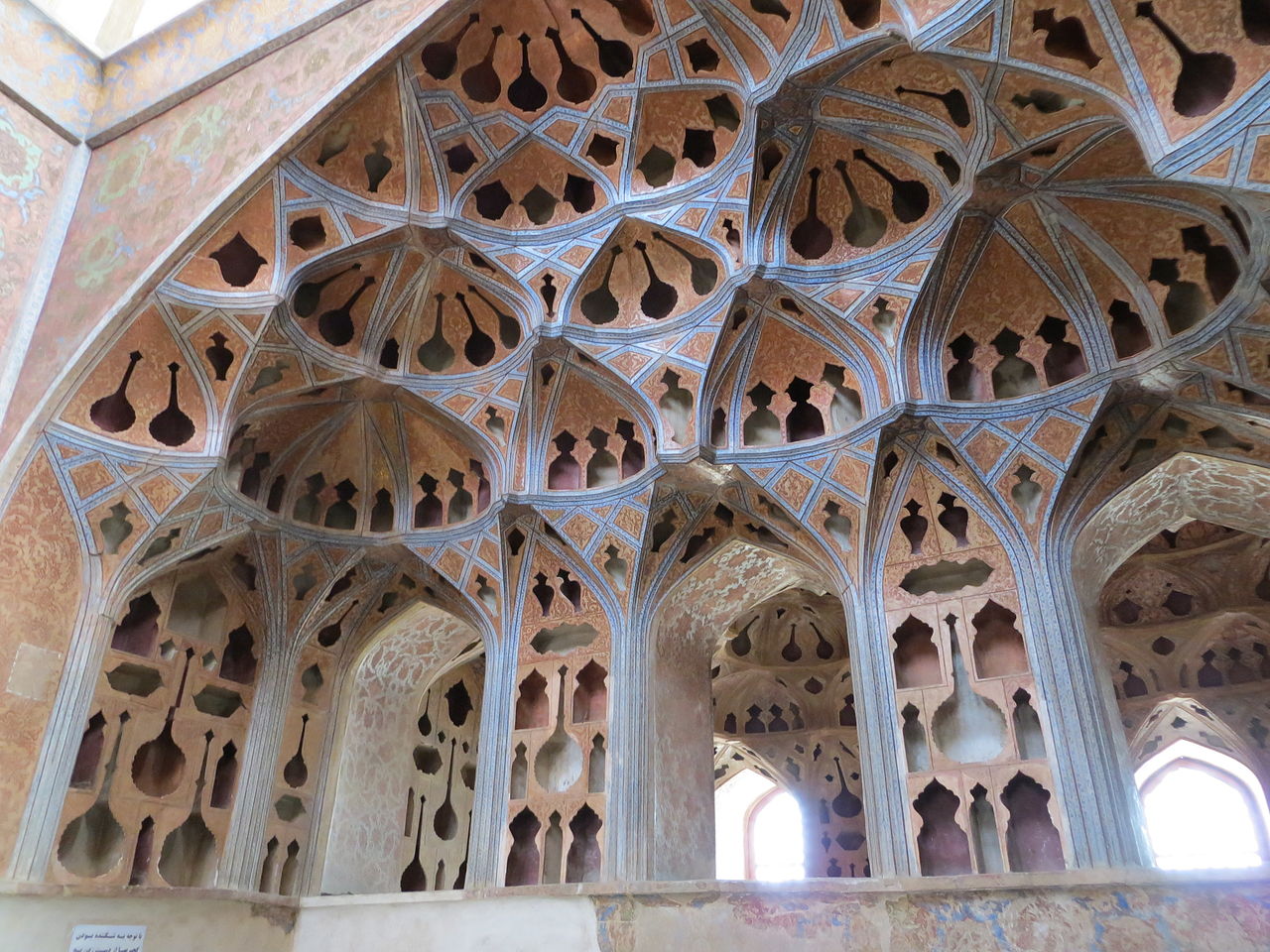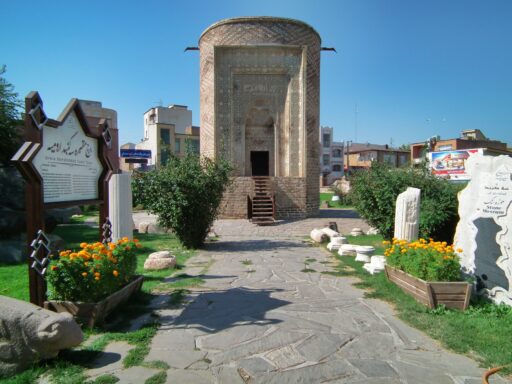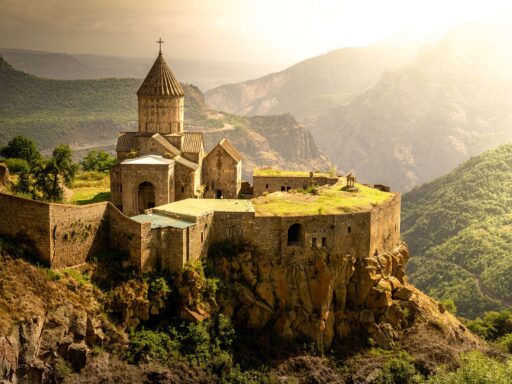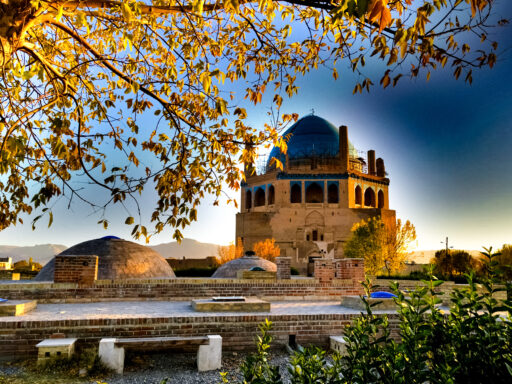Introducing The Aali Qapu
Rising majestically along one side of the UNESCO-listed Naqsh-e Jahan Square in Isfahan, Iran is the iconic Aali Qapu palace. This ornate structure exemplifies the apex of Persian artistic achievement under the Safavid dynasty during the 16th and 17th centuries CE. With its perfect blending of architectural styles and lavish decorations, Aali Qapu continues to enchant visitors from around the world.
Origins as a Royal Palace
Aali Qapu, meaning “The Sublime Gate” in Persian, was constructed in the late 16th century as an imperial palace and residence of the Safavid shahs. Its elongated facade and elevated terrace were designed to provide the royal court with views overlooking the adjacent Naqsh-e Jahan Square below.
The original palace was built on the orders of Shah Abbas I, who moved the Safavid capital to Isfahan in 1598 and transformed the city into a cultural jewel of the Persian Empire. Aali Qapu became the preeminent royal residence and functioning seat of government for entertaining foreign dignitaries and delegations.

Blending Architectural Influences
Aali Qapu exemplifies a harmonious blending of diverse architectural styles from across the vast Safavid Empire. The ground floor contains an array of room and halls covered with intricately painted frescoes and woodwork. This space reflects classic Persian architectural forms including the hashti, an octagonal reception hall.
The second floor features an extended columned porch with 63 slender columns topped by capitals. This open veranda draws from Azeri architectural traditions from northwestern Iran. Flanking this level are reception halls combining Persian arches with Chinese-inspired hardwood screens.
Above rises the iconic third floor, with 18 slender columns supporting vaulted ceilings decorated in the Ottoman Turkish style. This fusion of regional influences created a new distinctively Iranian architectural aesthetic.
A Palace of Ornate Elegance
While relatively modest in size, Aali Qapu is overflowing with elaborately decorative surfaces and ornamentation. Throughout the palace, intricate patterns and paintings utilize bold colors and gold leaf backgrounds.
The walls feature murals depicting courtly scenes, landscapes, hunting, festivals, and mythical beasts. Delicate Arabic calligraphy bands decorate areas between paintings. Intricately carved stucco adds extra detail around arches and dados.
One standout space is the Music Hall, with walls filled with frescoes of musical instruments and angelic figures. The hall features an ingenious echo effect enabling performances to be heard across the square. Aali Qapu’s refined elegance and ornate interior befit its role at the heart of the Safavid dynasty.

The Elevated Terrace
The most iconic part of Aali Qapu is its elevated terrace on the 6th floor overlooking Naqsh-e Jahan Square. Reached by an internal spiral stairway of 499 steps, this long columned balcony has open views on all sides.
Originally, Safavid court festivities, military parades, sporting events, and public audiences were held on this terrace as a display of royal power and prestige. From this height, the shah could look down over the square and observe the bustling city below.
With its 18 slender columns, the upper terrace introduced a new light and elegant architectural vocabulary that became a signature of Safavid-era design. The fusion of styles seen in Aali Qapu would inspire regional architecture for centuries to come.
Decline and Restoration Work
After Shah Abbas I’s death in 1629, Isfahan’s status as capital declined. Aali Qapu was ransacked by marauding Afghan troops in 1722. Over two centuries of neglect caused significant deterioration and damage.
In the 20th century, restoration efforts began on Aali Qapu’s pavilion and intricate interior. Several galleries remain closed, with ongoing stabilization and renovation still needed. A parabolic dome added during initial restorations was removed in 1999 to regain the original look.
Despite remaining fragility, the palace has regained much of its dazzling former glory. Aali Qapu stands as one of the finest surviving examples of the pinnacle of Safavid architectural and artistic achievement.

Current Status as a Museum
Today, the restored Aali Qapu functions as a museum operated by Iran’s National Heritage Organization, attracting thousands of Iranian and international visitors. While the first floor royal residence section remains closed, tourists can explore the upper columned verandas and terrace.
The palace provides an evocative glimpse into the wealth, power, and sophistication of the Safavid-era court in 17th century Isfahan. Standing beside Naqsh-e Jahan Square, the grandeur of Aali Qapu is undiminished through the centuries. This iconic landmark remains among Iran’s most dazzling architectural treasures.
Conclusion
Aali Qapu represents Persian palace architecture and courtly culture at the peak of refinement. With its harmonious fusion of diverse regional influences, complex decorative program, and elegantly proportioned terraces, this royal pavilion stands as an emblem of Safavid artistic brilliance. The sublime palace continues to amaze modern visitors, just as it trumpeted imperial prestige centuries ago






